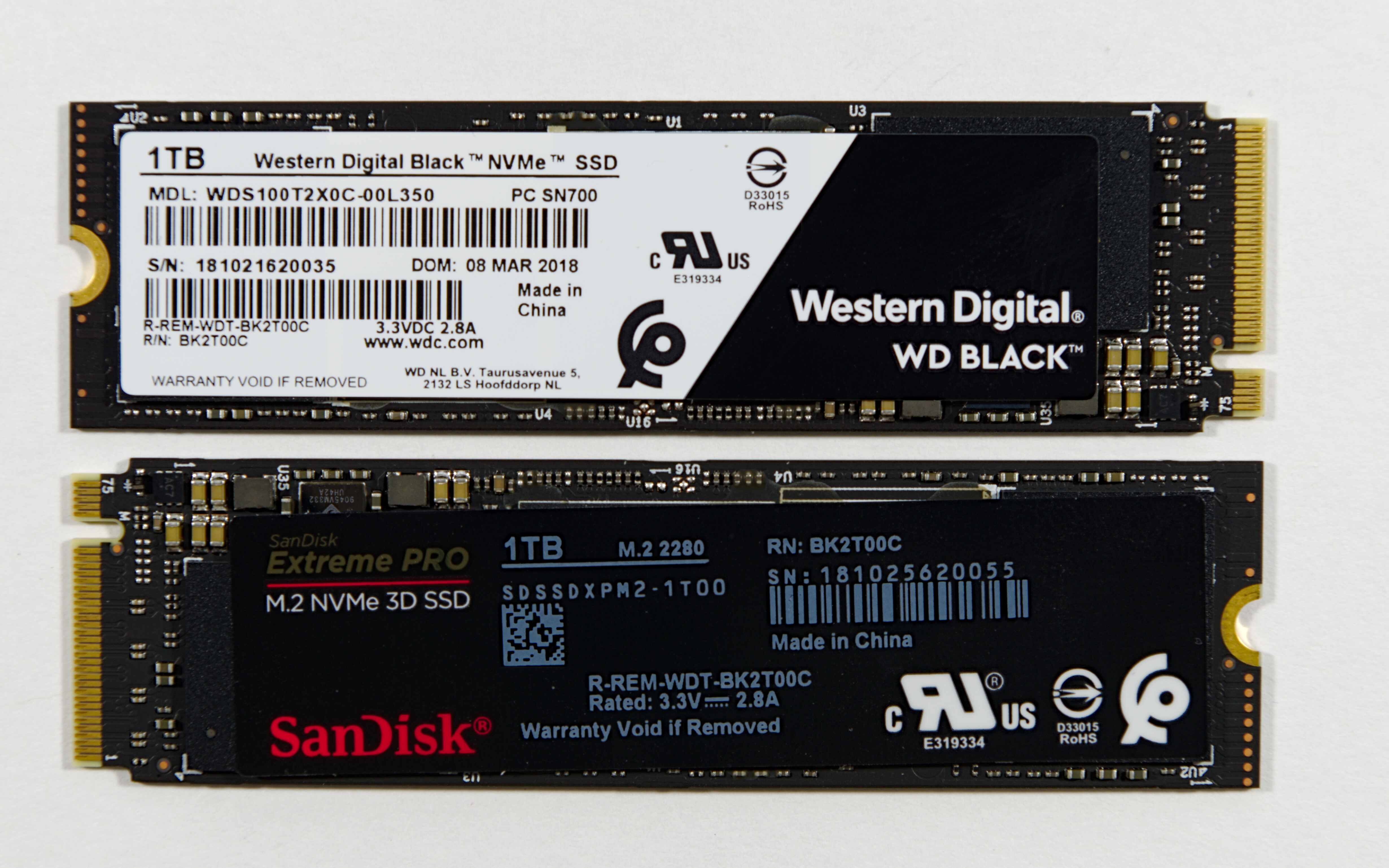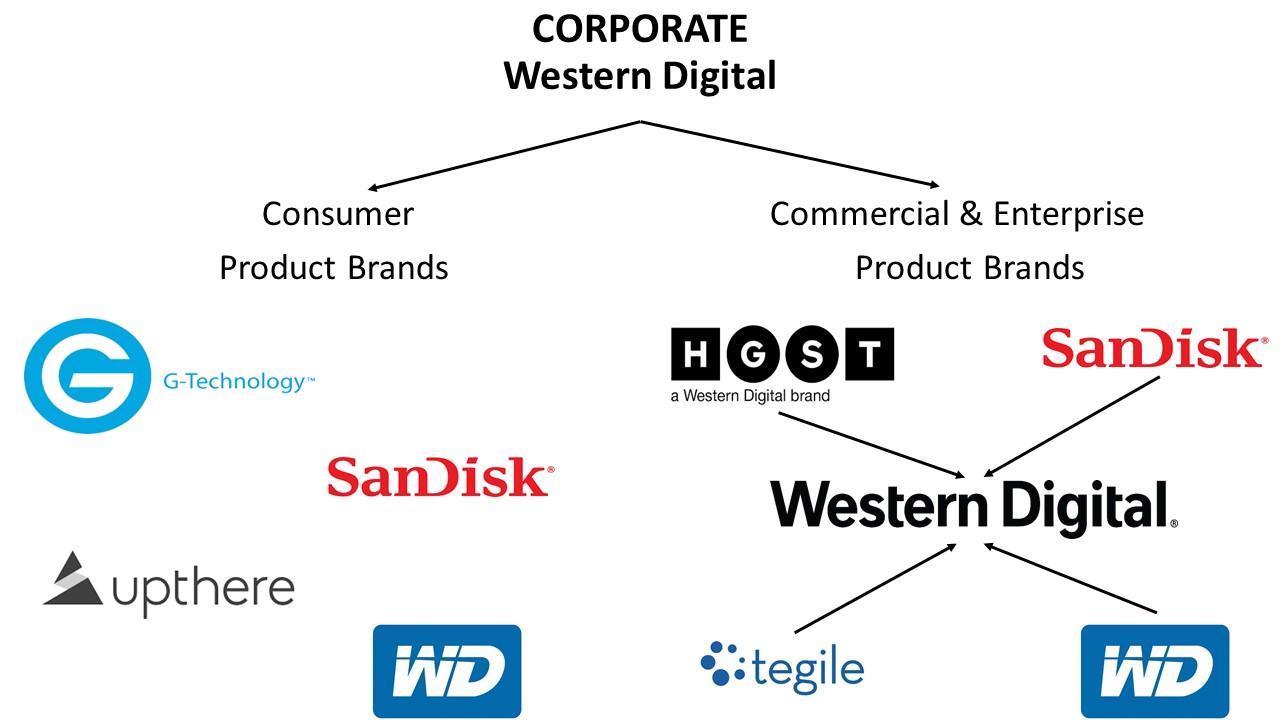Western Digital Product Rebranding: What Has Changed?
Just think: in just two years, Western Digital celebrates its 50th anniversary! Our story began on April 23, 1970: it was on this day that Alvin Philips registered the company General Digital Corporation, which was renamed Western Digital just a year later, in July 1971. Of course, at that time there could be no question of any mass production of hard disks (if only because the HDD we did not yet have the usual). Initially, the company specialized in the production of microchips for calculators, quickly taking leading positions in the industry. In 1976, the company's management decided to expand the business: production of controllers for floppy drives was launched, and in 1983, in the wake of the growing popularity of the first PCs, our portfolio was enriched with controllers for HDD. In parallel, Western Digital tried its hand at creating other components, including SCSI controllers, network and video cards. The latter were produced under the brand Paradise Systems, which a modern user associates only with the same name comic book publishing house.
The general development vector was finally chosen in 1988, when the company began developing its own hard drives. In order not to be sprayed between different directions, it was decided to sell non-core assets. As a result, the SCSI chip business went away from Adaptec, SMC Networks acquired the production of network controllers and hard disk controllers, while the Paradise Systems brand became the property of Philips Semiconductors (however, the company failed to gain a foothold in the video card market, and soon production video accelerators were discontinued, and the trademark itself sunk into oblivion).
')
To an outside observer this act may seem unnecessarily wasteful. Indeed, during the development of microcircuits, Western Digital created a single-crystal UART, single-chip chips for WD1771 floppy drives, as well as the world's first ISA SCSI controller that supports Bus Mastering technology, which allows direct control of the bus device, without the participation of a central processor. Perhaps we could achieve much more, becoming to develop several areas at the same time?
Here it is necessary to take into account two important nuances. First, at that time Western Digital was a fairly young company: we simply did not have the necessary resources. Secondly, the computer component market itself, or rather its consumer sector, has just begun to take shape, and if we tried to chase two hares (or a whole bunch of eared), we could hardly take 1st place in the industry, winning the title the largest hard drive manufacturer in the world.
Moreover, the proceeds made it possible not to reinvent the wheel, but to purchase a ready-made business for the production of hard drives from the Japanese Tandon Corporation (the amount of the transaction was 80 million US dollars). It is thanks to this strategic step that in 1990, Western Digital launches its own HDD Caviar lineup, and is able to fully concentrate on introducing innovations.

One of the first Western Digital Caviar hard drives
Among the most important of them should be the creation of the first mass IDE-drive with 8 MB buffer, the first SATA disk with a spindle speed of 10 thousand rpm Velociraptor, as well as the practical implementation of the Advanced Format storage format markup technology, which made it possible to switch to 4 -kilobyte blocks, which, in turn, helped to reduce the width of the track to 70 nm and increase the data recording density.
In order not to lose this pace, in March 2011 we acquired a subsidiary Hitachi Global Storage Technologies, specializing in the production of storage devices of the corporate level (this time the transaction volume reached 4.3 billion). Previously, it was owned by IBM: as early as 2003, Hitachi bought out the business from an American corporation, spending half as much - just $ 2.05 billion. Nevertheless, despite the impressive amount, the acquisition turned out to be quite successful: having gained access to IBM patents and combining them with their own work , we were able to significantly improve the Ultrastar product line, which has become the de facto gold standard in the category of enterprise solutions.

Western Digital acquired HGST in 2011
When it became clear that in the medium and long term, flash drives would force out traditional harddrive devices in a number of segments, we decided that it was time to master a new direction. In a competitive market, creating a production of semiconductor crystals from scratch would have turned out to be a serious financial loss for the company, so the purchase of SanDisk was quite a logical step. Although $ 16 billion is not a small amount, and according to the results of the 4th quarter of the 2016 fiscal year, Western Digital's total losses amounted to 351 million due to this transaction (and this despite the increase in total profit by 10%), the investments and risks recovered in full. In particular, thanks to teaming up with SanDisk specialists, we were able to manufacture our own controllers for NVMe SSDs by launching the updated series of Black 3D NAND solid-state drives and making them even faster (we will tell about them in future publications).

Solid State Drives Western Digital Black 3D NAND SSD
What will change in the Western Digital product line?
With all the advantages, the purchase of a ready-made brand has one very significant drawback: in the end, buyers start to get confused in trademarks. That is why, in honor of the completion of the merger of WD, SanDisk and HGST, we decided to separate all OEM solutions into a separate brand, Western Digital, including components for assembling personal computers, NAS, servers, building video surveillance systems, etc. In addition, the Western Digital brand will combine the lion’s share of devices for the corporate sector.

Western Digital Brand Family
All products available under the Western Digital brand will be transferred to a separate website , and information about products that will continue to be produced under the SanDisk, G-Technology and other brands will remain available on the portals of the same name.
Now let's take a look at the points, what will change upon completion of the rebranding.
- Brand HGST
Everything is simple here - the brand will be eliminated. The fact is that the abbreviation HGST stands for Hitachi Global Storage Technology, and under the terms of the contract, we have no legal right to use the name of a Japanese corporation for commercial purposes. We hurry to reassure corporate users: Ultrastar drives, modular ActiveScale platforms, JBOD storages and other products currently available under the HGST brand are not going anywhere. Moreover, we will continue to develop these areas, adding new models to the product lines. All that will change is the names of certain solutions: for example, the HGST Ultrastar DC HC530 drive will change its name to Western Digital Ultrastar DC HC530.
- SanDisk brand
Consumer-grade products will continue to be marketed under the SanDisk brand. The implementation of commercial and corporate solutions (flash drives of industrial class, memory cards for video surveillance systems, etc.) will now be implemented under the Western Digital brand.
- Brand G-Technology
G-Technology is a high-performance external (USB, Thunderbolt) and network storage, focused on content makers (photographers, operators, video editors). We plan to bring the entire product catalog to the Russian market in the first quarter of 2019. Due to the fact that the G-Technology portfolio is represented by ready-made highly specialized solutions for professionals and enthusiasts, we do not want to violate the integrity of the brand, so all devices will continue to be sold under the original brand.
- Brand Tegile
Under this brand, production of arrays of solid-state drives and hybrid storage IntelliFlash, focused on the corporate sector, has been launched. Like HGST, the brand will be eliminated, and production will continue under the Western Digital label.
- Upthere Brand
Upthere specializes in developing cloud services for personal data storage. Integrating the platform with Western Digital retail products will significantly expand their capabilities and improve user experience. The brand itself will continue to exist intact.
- WD Brand
Under the WD brand, hard drives are available for personal computers, laptops, NAS, server platforms and video surveillance systems, as well as SATA and NVMe solid-state drives in 2.5-inch M.2 2280 formats. All of the series will be branded as Western Digital, while retail solutions ( My Passport portable drives, My Cloud personal cloud storages, etc.) will keep the original names.
For greater clarity, we have prepared a special table that lists all the products that will change their names.
Western Digital Products List Rebrand
Original name | Product series | After rebranding |
HGST (enterprise class) | ActiveScale Series Ultrastar HDD Series Ultrastar SSD Series Ultrastar Internal Drives Ultrastar Servers Ultrastar Platforms | Western Digital (e.g. Western Digital Ultrastar HDD) |
SanDisk (commercial solutions) | iNAND EFDs (Automotive) iNAND EFDs (Connected Home) iNAND EFDs (Industrial) iNAND EFDs (Mobile) SD Cards (Automotive) SD Cards (Connected Home) SD Cards (Industrial) microSD Cards (Connected Home) microSD Cards (Industrial) microSD Cards (Mobile) microSD Cards (Surveillance) microSD Cards (Commercial) USB Cards (Connected Home) | Western Digital (for example, Western Digital iNAND EFDs) |
SanDisk (enterprise class) | PC SN520-720 SSDs x600 SATA SSDs | Western Digital (e.g. Western Digital x600 SATA SSD) |
Tegile (enterprise class) | IntelliFlash Series | Western Digital (for example, Western Digital IntelliFlash N) |
WD (commercial solutions) | WD Blue HDD WD Blue SSD WD Black HDD WD Black SSD WD Gold EC HDD WD Green SSD WD Red HDD WD Purple HDD | Western Digital (for example, Western Digital Blue HDD) |
Source: https://habr.com/ru/post/430426/
All Articles